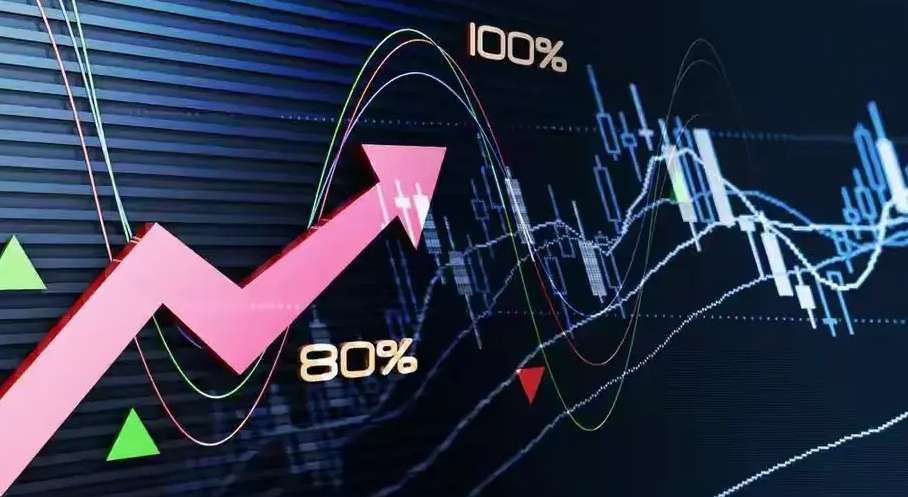Second Sci-Tech 100 ETFs Launch
Advertisements
The rapid approval of new products on the Star Market marks a significant milestone for China's financial landscape,especially in the realm of technology investment.
On October 24,2023,exciting news emerged as various financial institutions received official approval for their Star Market 100 Exchange-Traded Funds (ETFs).These mainly included well-known names such as Huaxia,Haitai Baifang,and E Fund,which reflects growing confidence among fund managers regarding the potential of technology-driven investments in the country's emerging industries.
In just a few months' time from the launch of the first batch of the Shanghai Stock Exchange Star Market 100 ETFs,reaching the market only two months prior,the second set of ETFs signifies an excitement bursting forth in response to burgeoning investor interest.The original quartet of ETFs has already demonstrated impressive performance,achieving a growth rate of nearly 16% in their total assets over the span of one month.
Experts within the investment community have emphasized that the new Star Market 100 ETFs fulfill a notable demand among investors for more diversified mid- to large-cap investments,serving as an effective complement to existing technology-themed ETFs.This blending of different ETFs not only enhances the overall investment matrix under the Star Market,but also illustrates the optimism from major financial entities regarding the investment value of these indices.
Moreover,several public fund managers interviewed shared their views on how the technology sector in China seems poised to enter a new period of innovation.They foresee a rich array of investment opportunities arising,fuelling optimism about the Star Market's long-term growth trajectory.
The swift approval of the second batch of the Star Market 100 ETFs indicates an urgent response from fund houses to the latest waves of market demand.Just a month after the first set of ETFs debuted on September 15,this new wave has the potential to attract additional capital,given the positive momentum already observed.
Since its inception in 2019,the Star Market has undergone rapid expansion,resulting in an impressive roster of over 562 listed companies,with a combined market value exceeding 60 trillion yuan.This rapid growth has paralleled rising investor interest in technology and innovation,underlying a definitive trend toward enhancing the capacity for sustainable economic development in China.
The Star Market 100 Index represents an essential step forward in evolution,particularly with its focused selection of 100 quality stocks boasting strong liquidity and are situated between the mid-cap indices such as the CSI 500 and CSI 1000.This emphasis on mid-cap companies marks a strategic shift differentiating it from the Star Market's flagship Star 50 index.
In terms of industry distribution,the Star Market 100 Index is well-balanced across key technological sectors including biomedicine,with 30.6% of its composition,electrical equipment at 19.7%,and electronics at 18.6%.This broad coverage aligns closely with key national strategies targeting the development of strategic emerging industries.Additionally,the components within this index showcase robust research and development investments,as well as strong growth rates in revenue,underlining their status as exemplars of what is termed "hard technology." This sector,heavily focused on innovation,positions itself as essential to modern and future economic trajectories.
"As the Star Market has expanded rapidly,the representational capacity of the Star 50 Index has diminished,currently covering only 40.72% of the free float market capitalization. The advent of the Star Market 100 Index arrives at a crucial moment,bridging this gap with a 25.21% free float market capitalization coverage rate,thus enriching the index architecture of the Star Market," said representatives from Huatai-PB Fund Management Co.
The advent of the Star Market 100 Index arrives at a crucial moment,bridging this gap with a 25.21% free float market capitalization coverage rate,thus enriching the index architecture of the Star Market," said representatives from Huatai-PB Fund Management Co.
Looking to the future of the Star Market 100 Index,experts suggest a notable uptick in institutional attention towards the index components,particularly in recent market adjustments.As Northbound investment flows have swelled in support of these components,the emerging optimism among public funds that are underweight in positions suggests potential major inflows of capital in the near future.
The scale of the initial wave of the Star Market 100 ETFs has indeed been impressive,with the first four ETFs amassing a staggering amount of nearly 7 billion yuan in total raised capital.Notably,the investment interest has been so robust that they collectively achieved trading volumes exceeding 1.8 billion yuan on the first day itself,demonstrating high liquidity that should continue to invite further investor participation.
As of October 24,the original four Star Market 100 ETFs now boast a total combined scale of 8.033 billion yuan,indicating a remarkable growth of almost 16% since their initial fundraising efforts.The recent approval of four additional link ETFs has further diversified investor access,allowing a broader audience to participate in these high-tech investment opportunities through banks and third-party sales channels.
Amid all these developments,there's been notable market pressure over the past two years both domestically and globally,but the easing of valuation pressures in the technology sector places it in a potentially advantageous position for recovery.As cyclical demands in electronics begin to stabilize and the pharmaceutical sector exhibits upward momentum,the profitability potential for both the Star 50 and Star 100 indices appears promising.
In summation,fund executives are increasingly optimistic about the future of the Star Market as a key battleground for hard technology innovation.With the convergence of strategic national interests and investment flows,the Star Market 100 Index could represent the next significant wave of investment opportunities within China’s diverse financial ecosystem.
As the landscape continues to evolve,it will be compelling to see how these new financial tools not only reshape the investor experience but also serve as a bellwether for the vitality of the technology sector's growth in China.
Leave a comment
Your email address will not be published